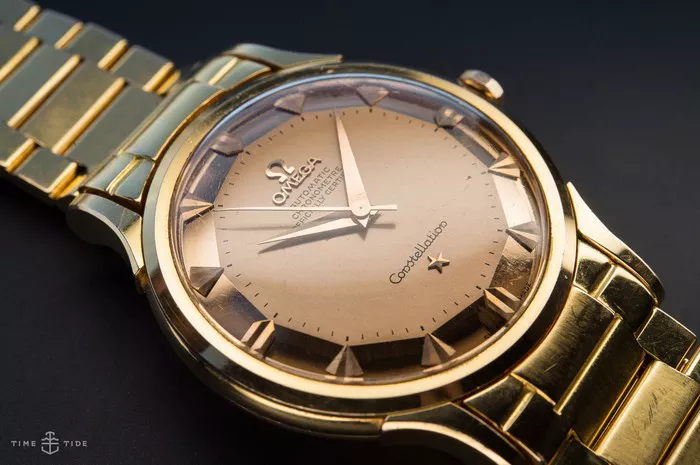Omega, a name synonymous with precision and luxury in the watchmaking world, has an illustrious history that dates back to the mid-19th century. The brand’s inception is attributed to a visionary approach in horology, and its journey from a small workshop in Switzerland to becoming a global symbol of excellence is a tale of ambition, innovation, and remarkable craftsmanship.
The Founding of Omega Watches
Omega was founded by Louis Brandt in 1848 in La Chaux-de-Fonds, Switzerland, a town renowned for its watchmaking heritage. Louis Brandt’s enterprise began modestly, with Brandt assembling pocket watches from parts sourced from local suppliers. His initial success was driven by the quality of these timepieces and his innovative approach to production.
Louis Brandt’s Early Ventures
Louis Brandt, born in 1825, was not an unknown name in the Swiss watchmaking community. His decision to start his own business came at a time when the Swiss watch industry was flourishing but also undergoing significant changes. Brandt’s workshop was relatively small, but his focus on precision and reliability soon set his products apart. By sourcing parts from different local craftsmen and assembling them with meticulous care, he established a reputation for producing high-quality watches.
The Evolution into Omega
The brand’s transformation into Omega began in 1894, following the death of Louis Brandt. His two sons, Louis-Paul and César Brandt, took over the business and decided to innovate further. They set out to create a watch that would embody both technical excellence and aesthetic appeal. This endeavor led to the development of a revolutionary movement—the Omega caliber.
The name “Omega” was not chosen at random. It was inspired by the Greek letter omega (Ω), symbolizing the end or the ultimate limit. This choice was emblematic of the Brandt brothers’ ambition to achieve the pinnacle of watchmaking precision. The Omega movement they developed was a technical marvel, featuring a more compact design that improved accuracy and reliability. This innovation helped the company gain international recognition and set a new standard in the industry.
Expansion and Growth
As Omega’s reputation grew, so did its reach. The company expanded its operations and began to export its timepieces to various parts of the world. By the early 20th century, Omega had established itself as a leading brand in luxury watches. The company’s commitment to precision was further underscored by its participation in international chronometer trials, where it consistently performed at the highest levels.
Omega’s innovative spirit continued into the 20th century. During World War I, the company produced watches for the military, contributing to its growing reputation for durability and accuracy. Post-war, Omega continued to push boundaries, introducing new models and refining its techniques. The brand’s involvement in space exploration and the Olympics further solidified its status as a pioneer in the watchmaking industry.
Key Innovations and Milestones
The Omega Speedmaster: One of Omega’s most iconic models, the Speedmaster, was introduced in 1957. Known for its precision and reliability, it became the first watch worn on the moon during the Apollo 11 mission in 1969. This achievement marked a significant milestone in both Omega’s history and the field of horology.
The Omega Seamaster: Another notable model, the Seamaster, was launched in 1948 and became renowned for its water resistance. The Seamaster series has since become synonymous with adventure and exploration, with several models featured in James Bond films.
Quartz Technology: In the 1970s, Omega embraced the quartz revolution with the introduction of the Omega Quartz, which represented a major technological advancement in watchmaking. This shift not only showcased Omega’s adaptability but also its commitment to innovation.
Omega’s Enduring Legacy
Omega’s journey from a small workshop to a global watchmaking powerhouse is a testament to the Brandt family’s vision and dedication. The company’s ability to blend traditional craftsmanship with cutting-edge technology has ensured its continued relevance and success in the industry.
Throughout its history, Omega has remained committed to quality, precision, and innovation. The brand’s involvement in significant events such as space exploration, the Olympics, and its collaborations with prestigious institutions underscore its enduring legacy and influence.
Today, Omega continues to be a leader in the luxury watch market, celebrated for its craftsmanship, technological advancements, and iconic designs. The brand’s rich heritage, combined with its forward-thinking approach, ensures that Omega remains at the forefront of the watchmaking industry.
See Also Where To Buy Swatch Omega Moonwatch
Conclusion
The story of Omega Watches is one of vision, innovation, and excellence. From its humble beginnings under Louis Brandt to its status as a global icon, Omega’s journey reflects the dedication and passion that have driven its success. The company’s commitment to precision, coupled with its ability to embrace new technologies and trends, has established Omega as a symbol of luxury and reliability in the world of horology. As Omega continues to innovate and inspire, its legacy as a pioneer in watchmaking is sure to endure for generations to come.

